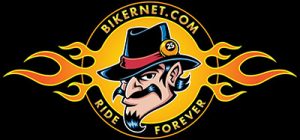
When viewing early images of Harley-Davidson riders, their clothing always stands out. Instead of the black leather, jeans, bandanas and safety helmets of today, riders in the first decades of the 20th century wore very different clothing: Three-piece suits, shirts with starched collars, flowing scarves, long skirts and no helmets. To our eyes, they look conventional and completely non-rebellious.

This image seems to clash with the spirit of Harley-Davidson motorcycle riders, who pride themselves on their individuality and spirit of rebellion–something that is reflected in their clothing.
The reason has to do with the solid business sense of the early Harley-Davidson Motor Company. In any business, for a company to succeed, it must consistently appeal to the broadest segment of the population that it can. This is naturally even more important for a new and growing company, such as Harley-Davidson was in the 1910s and 1920s. And, because the early motorcycle companies were all marketing a relatively new and untried product (one that was not yet identified with the individualist, the rebel and the adventure seeker) Harley-Davidson and other motorcycle companies appealed to the needs and conventions of the majority of Americans.

To do so, they reached out to the business owner who needed a way to serve customers more quickly and efficiently, the city dweller who needed a quick and easy way to get away for the weekend, as well as the average worker who needed an affordable means of transportation that was faster and offered more freedom than the streetcar or sidewalk. And appealing to the interests of the “mainstream” meant presenting an image of the early rider that reflected the conventions of dress at the time. This meant the suit of the businessman and office worker, the neat and practical uniforms of the delivery workers, as well as the elegant, “Sunday-best” traveling outfits worn by vacationers and day-trippers.
Indeed, at the turn of the century it was considered indecent for a women not to be wearing stockings or showing bare arms in anything but formal evening wear. So riders in the 1910s, 1920s, and early 1930s wore what was considered “proper” clothing: Suits (for both women and men), shirts with high-buttoned collars, neckties, fashionable hats and skirts for the women who were all too often relegated to the sidecar. But was the clothing really all that conventional?

Motorcyclists at the beginning of the 20th century certainly reflected the status quo of fashion in American society. But the clothing worn by motorcyclists was not all “conventional.” There were items designed or adapted to meet the particular needs of the motorcycle rider.

For instance, the unprecedented speeds achieved by the motorcycle resulted in harsher wind effects than those experienced on more common and slower means of transportation.
Because motorcycle riding shared traits with horseback riding, the high boots and wide pants (or jodhpurs) of equestrians were adapted for motorcycle use. Jodhpurs allowed freedom of movement for the knees and hips. And the high boots provided the necessary protection from the heat of the engine and the constant barrage of debris thrown up from the dirt roads that were an inescapable part of travel in the first decades of the 20th century.

Long-distance riders and racers took the protection provided by high boots one step further by creating the “puttee,” an ultra-heavy, strap-on lower leg shield that offered the necessary armor against the relentless punishment dished out by dirt tracks traversed at high speeds and dirt roads on long runs.
Harley-Davidson and its dealers also promoted the purchase of specially designed riding suits, as described in a 1916 ad:
“…[here] is a natty suit, obtainable either in government khaki or mole-skin cloth, that is exactly what most riders want. It incorporates several ideas that were suggested by men at the factory who have had much experience in road riding under varying weather conditions.”

Khaki was an extremely durable material and moleskin cloth was known for its warmth and, as advertisements said, “while not classed as waterproof, moleskin will stand a pretty fair shower.” This made these suits extremely practical riding gear. But these suits and other Harley-Davidson clothing, while designed with rider comfort and safety in mind, were not meant to make the rider stand out from the rest of society. Instead, Harley-Davidson knew the business necessity of appealing to the general populace, which put great value on neatness and propriety of dress.
As the company wrote to the dealers:
“The advantages to the dealer of having his riders neatly dressed have been described so often that upon this subject every-one undoubtedly agrees. In line with our policy of practicing what we preach we are seeking to co-operate with dealers in improving the style of riding suits.”

In spite of the emphasis on neatness, practicality and conventionality, it is a mistake to assume that early Harley-Davidson motorcycle riders did not value individuality and adventure. Early riders were, after all, taking a risk with a new and relatively untested form of travel. And they certainly showed their spirit of adventure in trying a new sport and a new way of getting away from the weekly routine.
Change happens gradually, and as the motorcycle became more accepted, riders found new ways to stand apart from the crowd. And their clothing, as can be seen from the riding gear of today, has changed, too.

–from Harley-Davidson Archives, with photos from Bob T.
